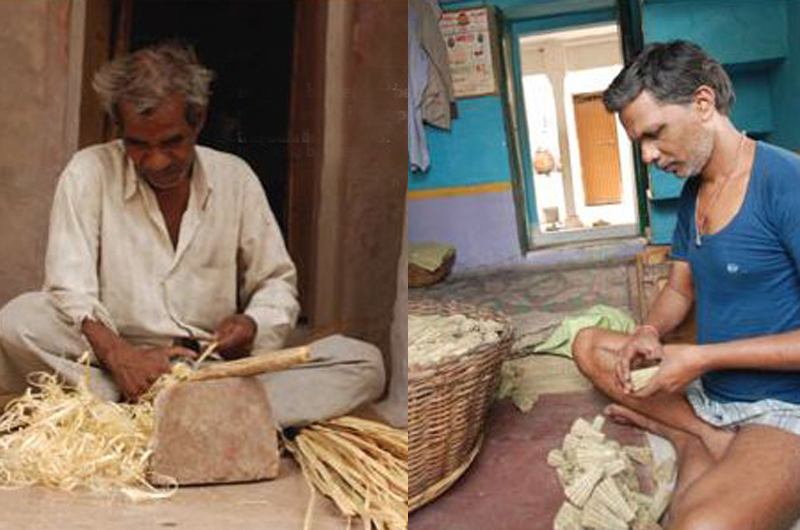An ambitious project seeks to record and preserve the cultural heritage of once-thriving hubs which are being eroded in the general move towards globalisation. Rina Mukherji elaborates on how the Digital Empowerment Foundation has embarked on an E-Heritage Project in collaboration with UNESCO, Chanderi being the first city documented
The cuisine, literature, architecture and manners of a place or region together make up its culture. But with India moving closer to becoming a part of the global village, our cities are losing the unique characteristics that once defined them, architecturally and otherwise. Keen to visually document the living heritage of some cities before they are lost forever, the Digital Empowerment Foundation (DEF) has embarked on an E-Heritage Project under its A-Mode Programme, in collaboration with the United Nations Educational, Scientific, and Cultural Organization (UNESCO). DEF intends to plot the special characteristics of select Indian cities, and highlight the cultural embellishments of urban locations.

Chanderi is the first city that DEF has documented. Known for its historical monuments and architecture, Chanderi has lent its name to the weaving style traditionally practised here. Documenting its history down the ancient and medieval eras, DEF minutely examined the working style of Chanderi’s weavers, and sought to pinpoint their problems. Realising that they are languishing due to the lack of a wider market for their exquisite products, DEF sought to arm the weavers with digital knowledge. They were given hand-on training in digital tools to market their work, and given opportunities to interact with designers as part of the Foundation’s Digikargha Project.

Chanderi, in spite of its architectural marvels, has remained off the tourist circuit, owing to not being connected by rail. Documentation had eluded the town. DEF sought to correct this, and its young team set about recording the sights and sounds and architectural wonders of the town, backed by historical data. The result: a picture-heavy coffee table book to serve as a comprehensive guide to Chanderi.
The walled city of Shahjahanabad (Old Delhi) is now a shadow of its old self. But not only in the past, but as recently as the 1950s, it was a thriving centre of art, literature, and culture. The city is often visited by people who want to savour its delectable cuisine. Its Parathewali Galli (lane known for parathas), the lassi it’s known for, and the fare at the iconic Karim’s Mughlai, are the stuff of legend. But there is more to Purani Dilli than its gastronomic fare. The tales about mushairaas (an evening social gathering at which Urdu poetry is read), Jama Masjid, Meena Bazar and Kabutarbaazi are embedded in the memories of the few living elders who were part of the area’s hoary past.

DEF has made videos on each of the aspects that make Purani Dilli what it is, so as to preserve the delights of the city for posterity The mansions or havelis of Shahjahanabad once housed aristocrats, eminent calligraphers, merchants, men of letters, and their families. The houses were styled in the traditional manner, with courtyards that grew neem, jamun or mulberry trees. DEF has revisited the bygone era through interviews with local elders, historians and authors who have lived through those days.
The series of videos (YouTube link provided at bottom of article) transports viewers to times gone by through stories narrated by historian Abdul Sattar, author R.V. Smith, and elderly local Janab Naseem Mirza Changezi. One gets to learn the history of neighborhoods like Pahari Imli, which as historian Sattar tells us, derived its name from an imli (tamarind) tree that flanked the mosque which stood at the doorway to the neighborhood. Changezi has a list of aristocrats and their mansions at his fingertips for us, while author Smith has some amusing anecdotes related to the Jama Masjid.

Poetry sessions or mushairas were an inseparable part of the Shahjanabad cultural scene. Bazm-e-Shahjahanabad was organised by DEF as a part of the project, wherein many young poets got the opportunity to present their compositions, and partake of the cultural ethos of the place. Documentation on the walled city of Shahjahanabad is currently available online through these videos. Once complete, the material will also be available in print format.
In the recent past, DEF has documented the havelis of the Shekhawati region in Rajasthan, which are a living example of how the trading classes patronized local artists during the early part of the 20th Century, as they prospered under the relative peace and quiet of the British Raj. The murals, which combine several styles of art, were the result of the patronage extended to these local artists, who boldly attempted ‘slice of life’ paintings depicting the times they were living in.
DEF plans to document the sights and sounds of the historical city of Pune in the near future.
(The writer is a senior journalist who lives in Pune.)
YouTube link to the videos: https://youtube.com/playlist?list=PLxhZ5_fZfXy_Ft-mgvmCOmGO8MhND2KTd



 from Webdoux
from Webdoux